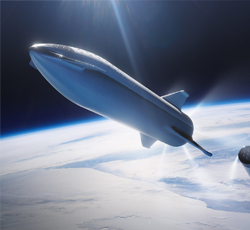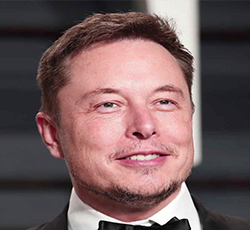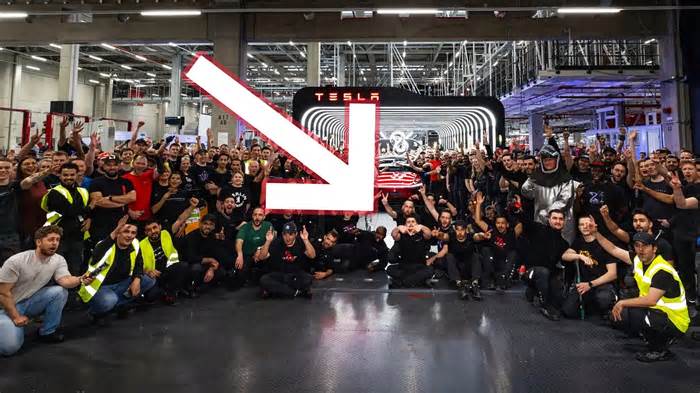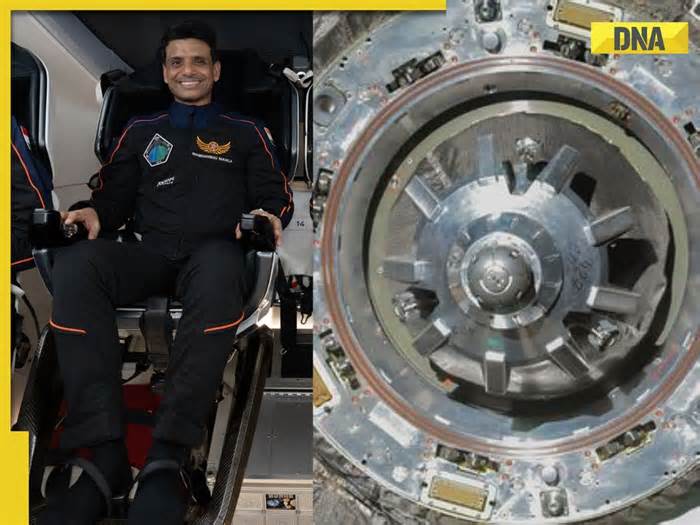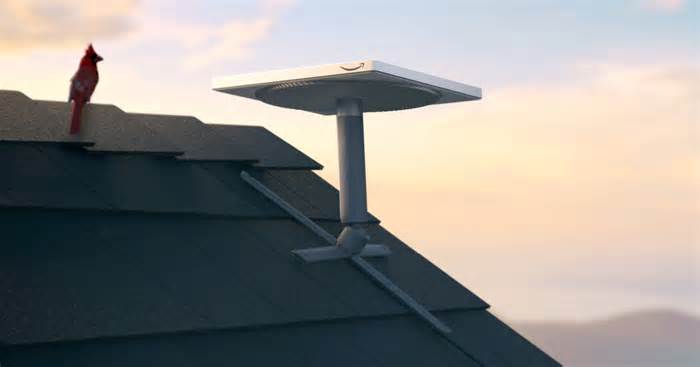
Rematch! Tesla Cybertruck vs. Porsche 911 Drag Race! (This Time It’s Not Rigged) - MotorTrend
- by Motor Trend
- May 16, 2024
- 0 Comments
- 0 Likes Flag 0 Of 5

See All 52 Photos
Back in December, Elon Musk released the Tesla Cybertruck into the world with an incredible claim: “It can tow a Porsche 911 across the quarter mile faster than the Porsche 911 can go by itself,” Musk said after showing a clip of his stainless-steel colossus towing a trailer and narrowly beating the iconic sports car down the dragstrip. Millions of people have already seen Tesla’s video, including you, probably.
0:00 / 0:00
It’s a great stunt to show off how unbelievably quick the 845-hp Cybertruck Beast is. At just 2.5 seconds to 60 mph in MotorTrend testing, Tesla’s three-motor electric truck beats every Corvette, every McLaren, and all but one Lamborghini that we’ve ever tested in the industry-benchmark acceleration test. That’s without a trailer, of course.
From the moment the words came out of Musk’s mouth, we were skeptical of Tesla’s towing/drag race video. Extraordinary claims require extraordinary evidence, and while Tesla did show the full, unedited race from four angles, that wouldn’t stop the Porsche 911 driver—presumably a Tesla employee—from ensuring the Cybertruck won. If the race was as close as Tesla’s video suggested, a soft launch, a slow shift, or a slight lift of the accelerator in the Porsche could be the difference between a Tesla loss and a victory.
See All 52 Photos
We’ve been fact-checking automakers and testing cars for 75 years at MotorTrend, and to believe Tesla’s claim we needed to not just see it with our own eyes but also drive it with our own feet and hands. So that’s what we’ve done. We rented a dragstrip, lined up two examples of the slowest new 911 you can buy, secured the same trailer that Tesla used, and borrowed Out of Spec’s 845-hp Tesla Cybertruck. Then we raced.
If you simply want to know who really wins this drag race, you can see it with your own eyes in the video above or scroll down to the results. For the sake of transparency, though, we’re showing all our work in this story. We also brought along Jason Fenske from Engineering Explained and Jordan Schiefer from Out of Spec, so you don’t only have to take our word about what happened.
The Race Setup
We approached our drag race with a scientific sense of curiosity. Regardless of which vehicle won, we wanted to understand how it nabbed the victory. We also gave the Cybertruck every possible advantage—within reason—since we assume Tesla also did the same.
See All 52 Photos
That starts by racing against a 2023 Porsche 911 Carrera T with a seven-speed manual transmission. This is the slowest new 911 you can buy today, but it’s hardly a dog. In prior MotorTrend tests, we’ve run the 379-hp stick-shift Carrera T to 60 mph in 3.9 seconds and through the quarter mile in 12.2 seconds at 116.4 mph. Per our usual test procedures, we raced the 911 with a full tank of gas.
Just like Tesla did, we hitched the Cybertruck to an ultralightweight Futura Club Sport aluminum trailer. Futura claims the Club Sport is the lightest car hauler on the market, and after weighing our trailer at 971 pounds, we believe it. That said, the single-axle Club Sport is designed to haul stripped-down race cars, not modern luxury sports cars. The trailer is only rated for a payload of 2,600 pounds, but the lightest Porsche 911 weighs around 3,200 pounds.
Futura representatives didn’t blink when we told them what we wanted to do. The company had full confidence in its product, as well as the Longway ZT501 light-truck tires (rated for 112 mph) installed on every Club Sport. We had Futura’s blessing to run the quarter mile to triple-digit speeds at 700 pounds over capacity.
See All 52 Photos
We loaded the trailer with a second Porsche 911 Carrera T, this one with the PDK dual-clutch automatic and a curb weight 104 pounds higher than the manual-transmission car. To offset that difference, we went on a mileage run to use up most of the fuel then removed anything that wasn’t bolted down—floormats, the owner’s manuals, the tire inflator kit. We briefly debated taking out the front seats, but if you start disassembling the car, where do you draw the line? Should the engine come out, too? We agreed it would be disingenuous to run the race with a car that couldn’t be driven on and off the trailer. Plus, we had already pulled enough poundage out of the towed car to give Tesla the advantage. For our race, the 911 on the trailer weighed 35 pounds less than the 911 that lined up against the Cybertruck.
We carried our obsession with weight even further. The Cybertruck was driven by Engineering Explained’s Fenske, who, coming off a bachelor party in Mexico, weighed the heaviest he ever has at a feathery 156 pounds. The Porsche was driven by your author (testing director Eric Tingwall), who, coming off four years of child rearing, also weighed the heaviest he ever has at 196 pounds. Because no pebble went unweighed, those figures include the helmets we wore.
See All 52 Photos
Our Cybertruck Beast, borrowed from Out of Spec, was firing on all cylinders. No, wait. Electrons? Motor windings? Whatever. Just two days before the drag race, this Beast beat Tesla’s advertised 2.6-second 0–60 time with a 2.5-second rip. And because electric vehicles can get slower as the battery depletes, we used MotorTrend’s long-term Ford F-150 Lightning to charge the Tesla between our morning drive to Famoso Dragstrip and before we started racing. When we launched it down the track for the first match with the 911, the battery showed 94 percent charge.
Pitting the Best Run Against the Best Run
To get more detail than what the track timing system offers, we armed both cars with Racelogic Vbox Touch data loggers, which allow us to visualize what the race would have looked like if the Cybertruck and the 911 posted their best runs in the same heat.
The manual-transmission Carrera T has a 3,500-rpm limiter at standstill, and on a sticky, prepped drag strip, launching quickly requires getting off the line without letting the revs fall. Drop the clutch too fast, and the engine will bog, falling out of its powerband. It takes a slow, carefully modulated clutch release to get the perfect launch, which keeps the engine on boil and extracts a small amount of slip from the tires.
See All 52 Photos
The Cybertruck launch, in contrast, is as simple as it gets. Put it in Beast mode, step on both pedals, wait a few seconds for the truck to squat on its air springs, then release the brake. With no turbo to reach full boost, no intake manifold to pressurize, no clutch to modulate, and a big, fat torque curve available from the jump, the Beast yanks hard even with 4,228 pounds hitched to its bumper.
The Cybertruck Beast would absolutely decimate the 911 Carrera T if it wasn’t saddled with the trailer. But in this drag race, the Tesla and the Porsche shoot off the line almost in unison. Acceleration peaks at 0.72 g for the Tesla versus 0.79 g in the Porsche once it’s making full power and the tires have hooked up. The Beast has the slightest advantage—a couple hundredths of a second—through the first 7 feet of the race until the Carrera T pulls even. Once the 911 edges ahead after 16 feet, the Tesla never leads again.
See All 52 Photos
After 60 feet, the Cybertruck trails by 0.06 second. Even the slow, human-actuated shift from first to second gear at 44 mph and 91 feet into the race doesn’t give the single-speed electric Cybertruck a chance to catch up. It remains 4 feet behind the 911 the entire time the driver is lifting off the gas, pushing in the clutch, yanking the stick, and then clutching out and returning to the gas. That upshift into a higher gear ratio reduces the torque at the 911’s wheels, and for the next 1.5 seconds, the two vehicles accelerate in lockstep, the Porsche just slightly ahead. But as speed builds, the Cybertruck’s power starts to taper off and aerodynamic drag starts to take its toll. The claimed 0.34 drag coefficient makes the Cybertruck incredibly slippery for a pickup truck, but a much larger frontal area means the air works harder on the Tesla than the Porsche. The 911 starts to open the gap.
When the 911 reaches the eighth-mile mark, the Cybertruck is 22 feet behind and moving 4.8 mph slower. That lead nearly quadruples between the eighth-mile mark and the quarter-mile finish line. The Ruby Star Neo pink sports car reaches the finish line after 12.2 seconds at 116.4 mph, 85 feet ahead of the stainless-steel wedge. The Tesla stops the clock 0.555 second later.
Now You Know the Truth
No matter how you slice it, present it, or asterisk the claim, Tesla and Elon Musk’s big brag doesn’t hold up. There’s no scenario where the Tesla Cybertruck Beast pulls a fully functional Porsche 911 Carrera T across the quarter mile before the Porsche 911 Carrera T gets to the finish line.
Even if Tesla had originally disclosed it only staged an eighth-mile race, the video seen by customers, fans, and curious observers is highly misleading. Like Tesla, we recorded runs with the Cybertruck ahead of the 911 at the eighth mile, but that’s not enough for us to say the Tesla-911 train is quicker than the Porsche. Based on the best performances of both vehicles, the 911 is the quicker car, unless your race ends after 7 feet.
See All 52 Photos
The race was a fantastic idea for a publicity stunt—and we’re not just saying that because MotorTrend did the same thing four years ago using a Tesla Model X P90D and an Alfa Romeo 4C Spider. But it was reckless for a corporation worth billions of dollars to make an unsubstantiated claim to millions of people without ever running the actual quarter-mile race. You have to pick the right foil for the tow vehicle to win. In this case, the Porsche 911 Carrera T is both too heavy and too quick for the Cybertruck to earn the victory.
Here’s the truth: A Tesla Cybertruck cannot tow a Porsche 911 Carrera T over a quarter mile quicker than the 911 Carrera T alone can run the race. Add it to the long list of broken Tesla promises.
Eric Tingwall
I fell in love with car magazines during sixth-grade silent reading time and soon realized that the editors were being paid to drive a never-ending parade of new cars and write stories about their experiences. Could any job be better? The answer was obvious to 11-year-old me.
By the time I reached high school, becoming an automotive journalist wasn’t just a distant dream, it was a goal. I joined the school newspaper and weaseled my way into media days at the Detroit auto show. With a new driver’s license in my wallet, I cold-called MotorTrend’s Detroit editor, who graciously agreed to an informational interview and then gave me the advice that set me on the path to where I am today. Get an engineering degree and learn to write, he said, and everything else would fall into place.
I left nothing to chance and majored in both mechanical engineering and journalism at Michigan State, where a J-school prof warned I’d become a “one-note writer” if I kept turning in stories about cars for every assignment. That sounded just fine by me, so I talked my way into GM’s Lansing Grand River Assembly plant for my next story.
My child-like obsession with cars started to pay off soon after. In 2007, I won an essay contest to fly to the Frankfurt auto show and drive the Saturn Astra with some of the same writers I had been reading since sixth grade. Winning that contest launched my career. I wrote for Jalopnik and Edmunds, interned at Automobile, finished school, and turned down an engineering job with Honda for full-time employment with Automobile. In the years since, I’ve written for Car and Driver, The New York Times, and now, coming full circle, MotorTrend.
It has been a dream. A big chunk of this job is exactly what it looks like: playing with cars. I’m happiest when the work involves affordable sporty hatchbacks, expensive sports cars, manual transmissions, or any technology that requires I learn something to understand how it works, but I’m not picky. If it moves under its own power, I’ll drive it.
Please first to comment
Related Post
Stay Connected
Tweets by elonmuskTo get the latest tweets please make sure you are logged in on X on this browser.






 Energy
Energy